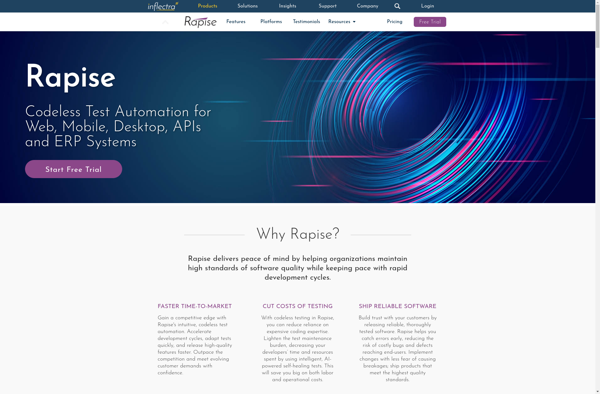Description: Selenium is an open-source automated testing framework used to test web applications across different browsers and platforms. It can be used to automate tasks like testing user interfaces, validating functionality, performance testing, etc.
Type: Open Source Test Automation Framework
Founded: 2011
Primary Use: Mobile app testing automation
Supported Platforms: iOS, Android, Windows
Description: Rapise is an automated software testing tool that supports cross-browser testing and various application types like web, mobile, desktop, etc. It provides record and playback functionality to easily create tests without coding.
Type: Cloud-based Test Automation Platform
Founded: 2015
Primary Use: Web, mobile, and API testing
Supported Platforms: Web, iOS, Android, API

